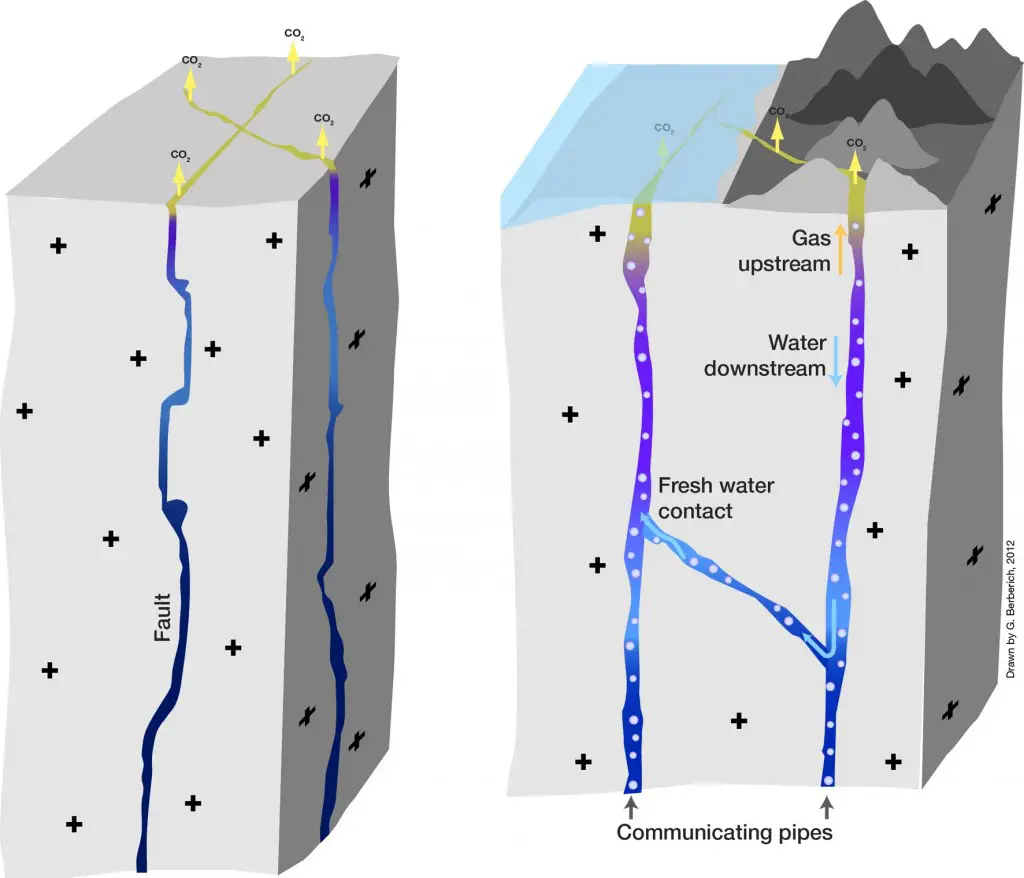This at least is what the geologist Prof. Dr. Ulrich Schreiber and the physico-chemist Prof. Dr. Christian Mayer of the University of Duisburg-Essen in Germany are convinced of.
It is the first model on the origin of life which includes a complete process leading from inorganic chemistry to a protocell where the problems of molecule formation, local concentration, driving force and membrane formation are being solved simultaneously” Prof. Mayer from the faculty of Chemistry says.
What is this all about? The detailed environments on the early Earth and the conditions, under which life could originate billions of years ago are largely unknown. In consequence, the possible processes which may have taken place can neither be proven nor excluded. Therefore, most of the models proposed so far are focused on singular elementary steps of prebiotic developments. In its long history, the corresponding discussion about the crucial location on early Earth shifted from the Earth’s surface to the deep sea, from volcanic outlets to shallow ponds. Lacking plausible alternatives, extraterrestrial regions like Mars or the interplanetary space have also been included.

On the other hand, the continental crust was, during a long time, neglected in the discussion. “This region, however, offers the ideal conditions for the origin of life“, Prof. Schreiber says. His focus is on deep-reaching tectonic fault zones which are in contact with the Earth’s mantle. As for example in the region of the “Eifel” in Germany, they are channeling water, carbon dioxide and other gases which constantly rise to the surface. This fluid mixture contains all necessary ingredients for prebiotic organic chemistry.
One of the most intriguing aspects is the presence of supercritical carbon dioxide in depths below 800 meters. This supercritical fluid combines the properties of a liquid with those of a gas and presents an ideal solvent for organic chemical reactions. “This allows for many synthetic steps leading to complex biological molecules which otherwise, in a solvent like water, could not be accounted for”, Prof. Mayer explains, “Supercritical carbon dioxide acts like an organic solvent enabling reactions which would not occur in an aqueous environment. Moreover, it forms interfaces with water and hereby generates double-layer membranes which represent the most important single structural element of living cells”.
The fundamental steps of the proposed mechanisms have already been successfully reproduced in the laboratory. This includes the formation of vesicles as simple cell-like structures or the combination of amino acids to longer polymer chains forming the basis for proteins and enzymes. A fascinating detail is the fact that these processes may be proven today as they have left traces in minerals which have grown in the fault zones of the early Earth.
Prof. Oliver Schmitz, responsible for the field of trace analysis in the department of Chemistry in Essen, is convinced: „Tiny fluid inclusions in crystals from Australian quartz dykes which have been collected by Prof. Schreiber contain a large collection of organic substances. They have been encapsulated from the fluid contents of the fault zone during the growth of the crystals. Today, they may help us to identify the chemistry which has taken place.“ With his profound experience in the analysis of natural compounds, Prof. Schmitz is a valuable asset in the research group at the University of Duisburg-Essen which deals with the fascinating question around the origin of life.




